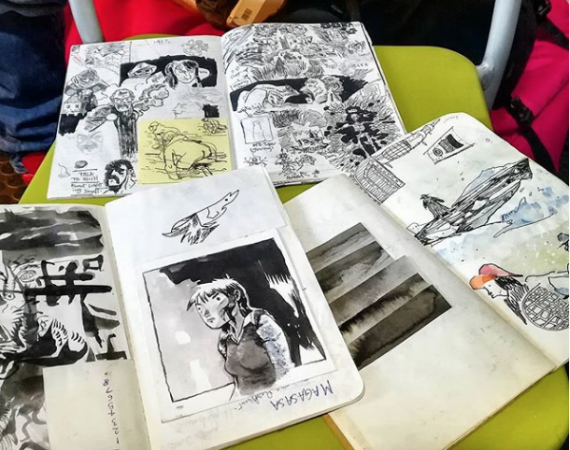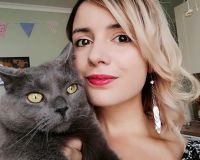Lunchtime talk write-up
Posted on Wed 4 Apr 2018
How to Grow a Story
Animation and pupperty director Joseph Wallace and illustrator and co-founding director of The Paper Cinema Nicolas Rawlings have collaborated to create a brand-new piece of ‘live animation’.

Posted by
Speakers
Nicholas Rawling
Founded in 2004 by Nicholas Rawling with Imogen Charleston and Christopher Reed, The Paper Cinema creates unique, magical performances that combine the languages of animation, music, film and theatre.Joseph Wallace
Joseph Wallace is an animation and puppetry director whose short films have received international acclaim and screened at numerous festivals around the world. He has written and directed more than a dozen shorts since 2007, including puppet, object and cut-out animation as well as live-action, dance and documentary.This week’s Lunchtime Talk was introduced by Bristol Ferment Producer Emma Bettridge. Through the Ferment programme, which is a partnership between Bristol Old Vic and the Watershed, animation and pupperty director Joseph Wallace and illustrator and co-founding director of The Paper Cinema Nicolas Rawlings have collaborated to create a brand-new piece of ‘live animation’ called The Keys of Tobias Brown.
Five Things I Learned:
1. The Paper Cinema create performative shows that are completely analogue, making everything through live camera loops, a similar technique used in the 70's British cartoon Captain Pugwash. All of the zooms, pans and transitions are done live using six cameras while the music and sound effects are created live from musician and foley artists. Paper Cinema co-founders Christopher Reed and Nicolas Rawlings are from musical and image-based backgrounds, their performances are non-verbal to allow the visuals and sound to lead the storytelling with the focus being on the feeling rather than exposition.
2. There is a symbiotic relationship between the animation and music as one may sometimes lead the other, much like a hybrid jam session. Joseph is aware that calling anything ‘live animation’ is problematic, you’d be forgiven if you thought it meant watching a person moving a puppet millimetre by millimetre for an hour! Joseph is interested in the materiality of his puppets, using found objects and the sculptural and textuality of them.
3. Nicolas shared with us his sketchbooks showing his process of developing the designs for the characters. Nicolas often does studies of artwork and influences that are close to his vision. The act of drawing is filtering ideas through Nicolas, which then eventually distils into Nicolas’ own unique designs. With each illustration Nicolas works out where to position the eyes of the camera so that they follow you.
4. The Keys of Tobias Brown has been an intensive process, Nicolas is working with Joseph to reimagine what it could be. Joseph’s process for developing the narrative for the show looking through Nicolas’ sketchbooks, where he has captured little moments, gestures and details. Joseph uses this as a springboard for ideas, looking at sketches that suggest narrative, finding the story behind the image and piecing all of these things together.
5. Joseph begins to develop the story using sticky notes to map out the locations, characters, objects and themes in the narrative. Once they have been established, they are grouped together to make a timeline, forming the skeletal structure for the story. Nicolas allows Joseph to freely interpret the illustrations, not telling him anything about the characters and background story except from the occasional hint on how things might be related. Joseph writes down the story beats on small bits of card, preferring this approach to using a computer.
